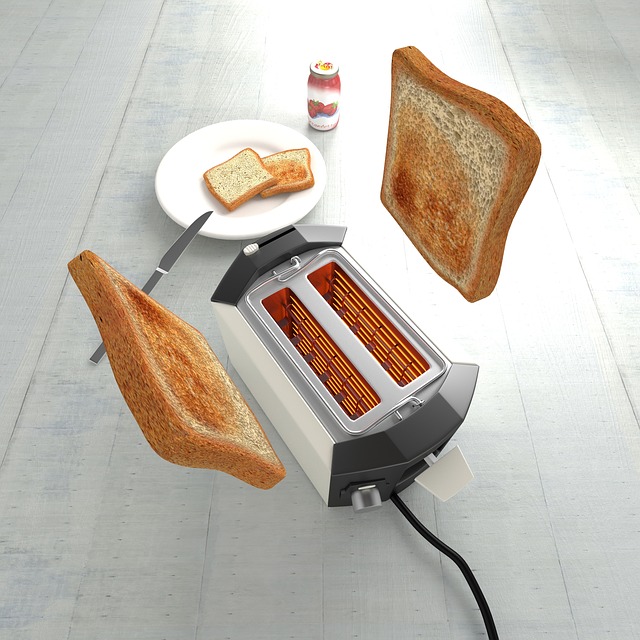Most people who irrationally fear artificial intelligence rarely ask the tough questions. Questions that would be relevant to everyday people. Nobody really cares about the survival of the human race. People care about the quality of their morning. Everybody wants a perfect piece of toast. What if an evil AI in your toaster intentionally goes out of its way to ruin your day? That would be a real downer. Luckily for us, that's not how AI works.

Image Source
First off, we have to figure out why a smart toaster would need AI algorithms placed into them. If you honestly think about it, they really don't. Most of the time, the little knob on the side works well enough to get an adequate burn. But lets say you are too lazy to use a knob and simply want to use voice commands to tell the AI how to toast bread.
The machine could simply start toasting the bread the second you put bread in the toaster, but it doesn't know how you like your toast. So it makes toast at the default setting. Then it asks you how you liked your toast. Given that it doesn't know that you like toast lightly toasted you complain that your toast was a little burned.
You continue this process until the toaster makes the perfect toast for you every single time. How did the machine learn your toast preferences? It simply used the feedback you gave it and adjusted it's guess for your ideal toast. By using prior information it makes a guess using the current available data.
To make things a little more complicated, let's say that multiple people use the toaster. Let's say our smart toaster has a camera that take a picture of the person who places bread inside the machine. It then uses that input data to make a guess about how to toast the bread. Someone might like their toast dark while another person might like their toast very lightly toasted. With this additional input data, our smart toaster can tell the difference.
This type of machine learning (called supervised learning) basically works by approximating a function based on prior input / output pairs. What we are trying to do is to estimate some function based on data points and then using an estimation of that function, apply it to novel data. That's a huge part of AI right there and it's basically a lot of algebra and statistics. Not so scary when you look at it like that.
In fact, a lot of AI solutions can be reduced to learning some function and then using that function to take in input data and mimic some output in a reliable and useful way. A lot of computer vision works this way. Self-driving cars work this way. Face recognition works this way. We are simply making inferences on past data. Nothing even remotely "emergent" here.
But supervised learning is only a subset of machine learning which is a subset of artificial intelligence. What other ways are there that could make your toaster an evil sentient monster that blackens bread beyond recognition? We'll talk about it some other time. But until then, you can stop being lazy and just turn the knob.
Meh. I don't want to train AI about what kind of toast I like. I want AI to tell me what kind of toast I like. I want "Guru" AI. I don't want to think for myself. I also don't want to chew. I want AI to pre-chew it for me. Maybe when I'm old, it will handle the chewing and pesky digestion for me, too. All this chewing, swallowing, digesting ... it takes so much of my time. My Steemit posts won't write themselves. Maybe that's the answer -- maybe AI should just write my Steemit posts for me. Then I can go back to making my own damn toast and eating it. Maybe I don't need a guru, after all. Maybe I just need a ghost writer.
Downvoting a post can decrease pending rewards and make it less visible. Common reasons:
Submit
That's what generative models are for. We can basically take the inputs of other individuals and generate "representative" pieces based on probabilities and a whole bunch of complicated math. If you feed such a model with enough Steemit posts, it will be able to generate a "representative" post. Granted the English will be jumbled, but that's not too far off from your typical post. I used the same process to generate music for a project and it did a pretty decent job of creating interesting music although at times it simply plagiarized a huge section of the original piece of music.
Downvoting a post can decrease pending rewards and make it less visible. Common reasons:
Submit
Just imagine a world where all our kitchen appliances become sentient! Look out people!
Downvoting a post can decrease pending rewards and make it less visible. Common reasons:
Submit
Skynet recognizes your contribution and will allow you to live.
Downvoting a post can decrease pending rewards and make it less visible. Common reasons:
Submit
I'm sure it appreciates the propaganda.
Downvoting a post can decrease pending rewards and make it less visible. Common reasons:
Submit